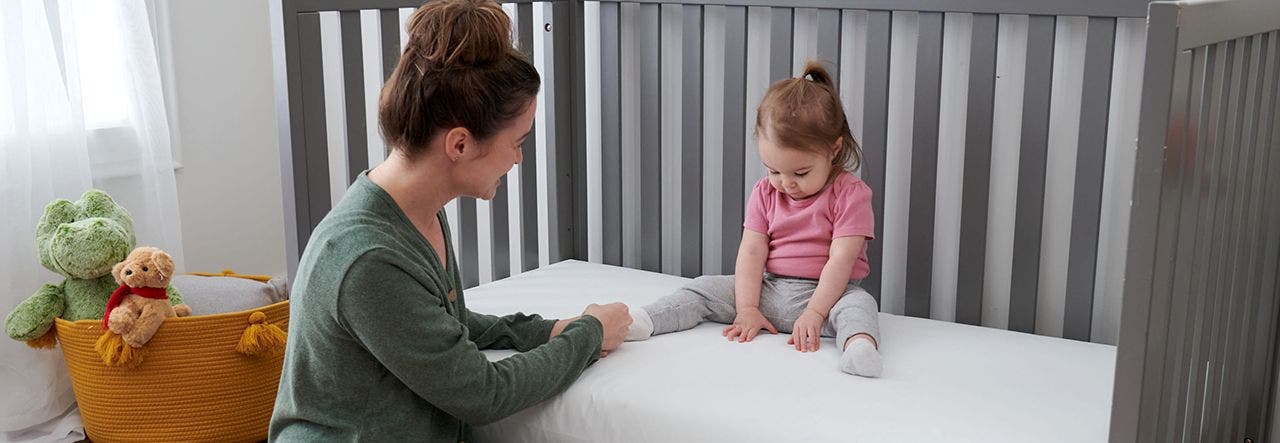Crib Mattress Shopping Glossary: Terms Expecting Parents Should Know
Picking out your little one's first crib mattress should be exciting, not overwhelming! But if you're like most parents, you might find yourself scratching your head at terms like "dual-stage" or wonder what the "two-finger test" is all about.
You're not alone! Most of us didn't study "crib mattress terminology" before our bundles of joy arrived.
Safer sleep starts with safer products, which you need clear, easy-to-understand information to find. So we created this parent-friendly glossary to help you confidently navigate the world of crib mattresses. When you understand what you're looking for, you can make the best choice for your little dreamer!
The Basics: Parts of a Crib Mattress
Before diving into all the fancy terms, let's get familiar with what makes up a crib mattress. Here's a diagram to help you.
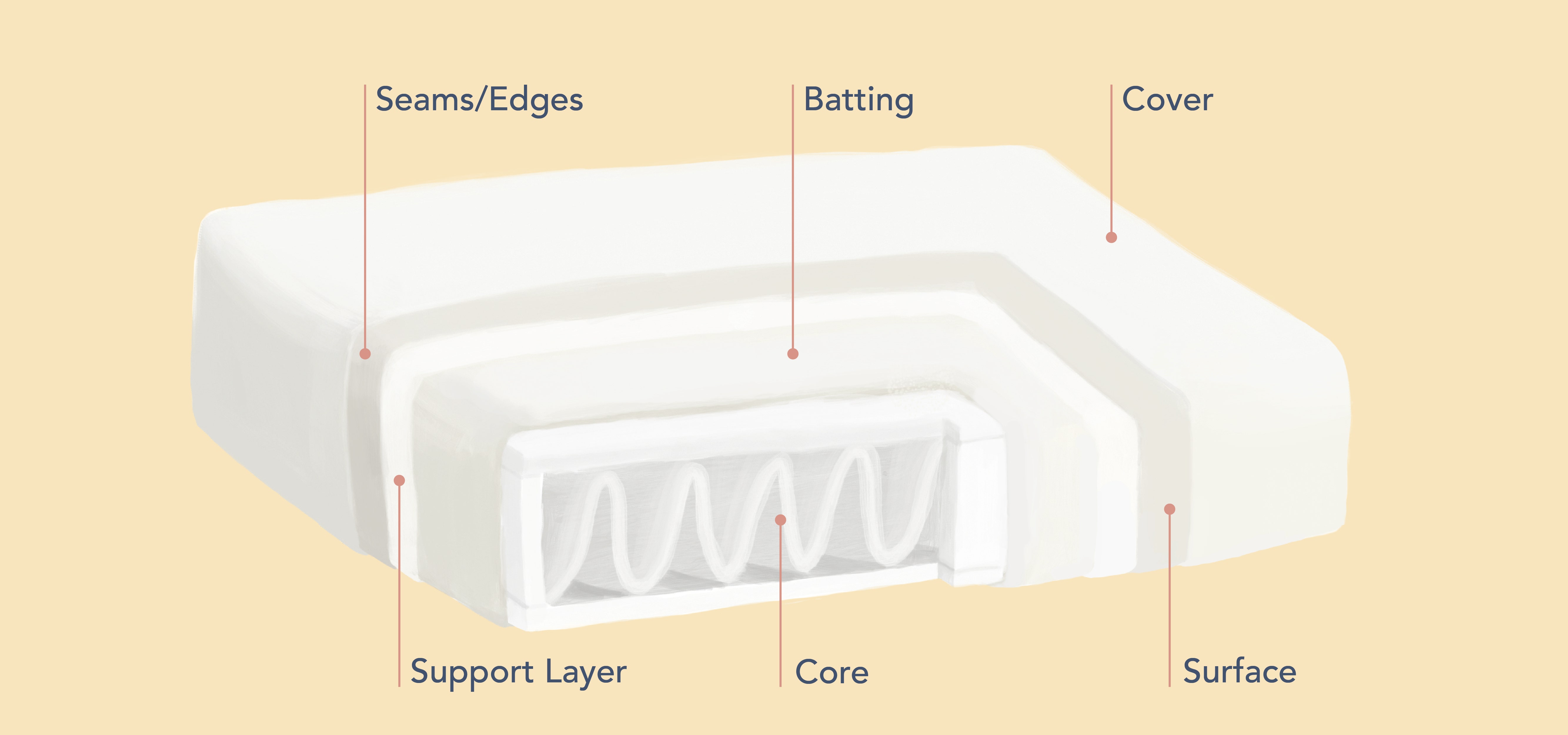

Wondering what's what? Here are some quick definitions, too:
- Core: This is the heart of the mattress that provides support. It might be made of an innerspring system, lightweight foam or other supportive materials.
- Support Layer: This layer adds firmness and stability to the crib mattress, and is super important for your baby's safety and physical development!
- Batting: This is the soft filling material between the core and the surface that adds comfort (without making it too soft).
- Surface: This is top layer your little one sleeps on. It should be smooth, firm and waterproof for maximum physical and hygienic safety.
- Seams/Edges: This is where the sides of the mattress come together. Reinforced edges help maintain the mattress shape over time.
- Cover: This is the outermost layer that protects the mattress. It might be waterproof, breathable or both (the best ones are!).
Who knew that so much went into something that seems so simple? (Consider it your first parenting lesson, courtesy of Lullaby Earth!)
Crib Mattress Shopping Terms From A to Zzz
Now that you know the basics, get familiar with these must-know terms so you can choose the safest, smartest option for your baby’s sleep.
Quick Glossary Index:
Looking for a specific term? Jump directly to any section below to find exactly what you need!
Construction and Materials Terms
These terms tell you what crib mattresses are made of and how each component contributes to comfort and safety.
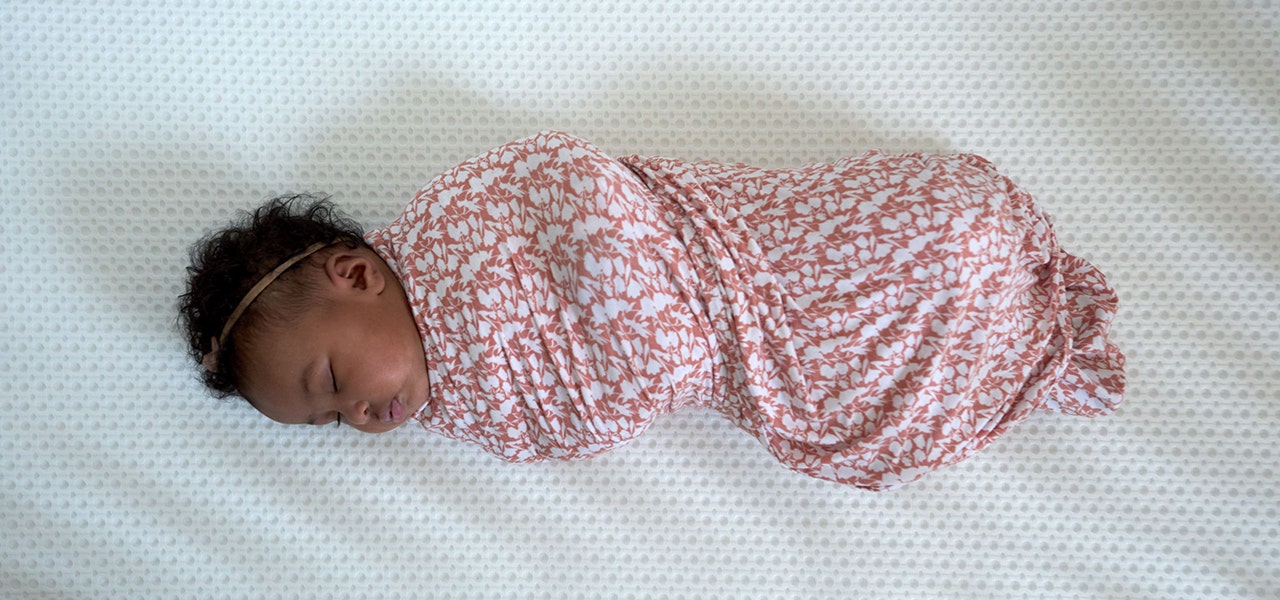

Breathable: Breathability measures air flow through a mattress. This helps your little one breathe easier, even if they roll onto their tummy during sleep. It also helps your little one regulate their body temperature to prevent overheating for safer, comfier sleep.
Dual-Stage: A dual-stage mattress has two sides – an extra-firm side for babies and a medium-firm side for toddlers. You'll use the firmer side until about 12 months, then flip it over as your little one grows. It's like getting two mattresses in one, saving you from buying a second when your baby becomes a toddler!
Food Grade: Food grade materials are safe enough for food contact, like those used in food containers. These materials typically won't leach harmful chemicals, even when exposed to moisture (like if your little one drools or has an accident). Our waterproofing, for example, uses food-grade polyethylene to protect your baby.
Innerspring Core: An innerspring core uses steel coils wrapped in padding layers to provide support. While they're known for durability, parents should note that these mattresses are much heavier than foam options, which may make bedding changes post-partum difficult.
Lightweight Core: A lightweight core (under 15 pounds) makes changing sheets and cleaning accidents much easier on tired parents. You can handle it with one hand while holding your baby with the other. All the safety and support without requiring superhero strength for those middle-of-the-night changes!
Reinforced Edges: Reinforced edges add extra support around the mattress perimeter to prevent sagging when your little one inevitably starts standing and jumping. This supportive border keeps your growing kiddo properly positioned, even when they migrate to the edges. Think of it as a safety bumper that maintains its shape through countless sheet changes.
Seamless Waterproofing: Seamless waterproofing prevents liquids from seeping into the mattress without using sewn-on covers that can leak. This integrated barrier keeps the core clean and dry through diaper leaks and nighttime accidents. Less worry about hidden mold or allergens building up where you can't see them.
Sizing and Fit Terms
Crib mattress sizing isn’t one-size-fits-all! These crib mattress shopping terms help you ensure a snug, safe fit for your baby’s sleep space.
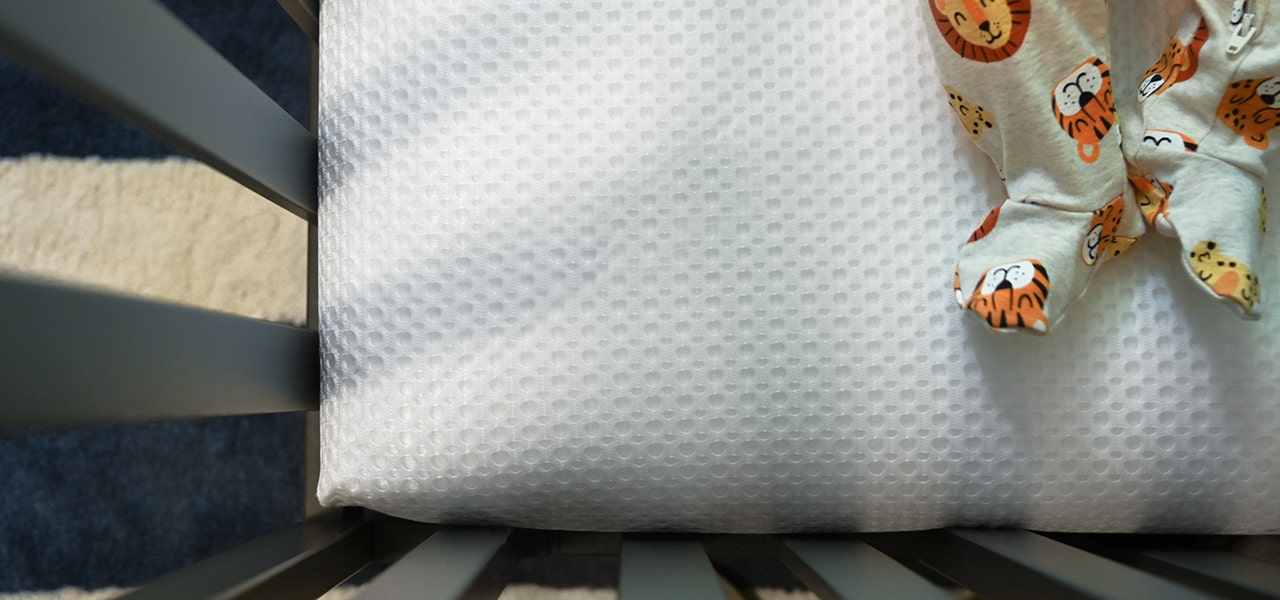

Bassinet Mattress: A smaller mattress for newborns up to 4-6 months old, with no standard sizing across brands. These provide a cozy first sleep space for your little one. They're typically oval or rectangular and much smaller than standard crib mattresses.
Mini Crib Mattress: A smaller mattress (usually 24" x 38") for mini cribs, perfect for apartments or shared bedrooms. For example, our Breathe Safe Mini Crib Mattress gives your little one all the same breathability benefits as our standard sizes, just in a more compact package. All the safety with half the footprint!
Snug Fit: A non-negotiable safety feature ensuring the mattress fits tightly in the crib frame to prevent dangerous gaps. Safety standards require gaps no larger than 1 inch between the mattress and crib walls. This simple requirement keeps little arms and legs from getting trapped during sleep.
Standard Crib Mattress: A mattress meeting U.S. safety regulations for full-size cribs (about 27¼" x 51⅝"). These mattresses must be under 6 inches thick to prevent climbing hazards as your curious kiddo grows. The standard size means it'll fit in most full-size cribs and later in toddler beds.
Toddler Bed: A transitional bed for children 15 months to 5 years that uses their familiar crib mattress (before they're ready for a big kid bed). These beds sit lower to the floor for easy access and fewer tumbles during midnight bathroom trips. Your little one can keep their Lullaby Earth mattress during this exciting milestone!
Two-Finger Test: A quick safety check to ensure your crib mattress fits properly. If you can fit more than two adult fingers between the mattress and any part of the crib frame, the mattress is too small. This simple test helps keep your little dreamer safely snug in their sleep space.
Health and Safety Terms
A 2025 report from CNN found that brain-harming chemicals were common in crib and kids mattresses – scary stuff! The terms help you understand what to look for and, more importantly, what to avoid in a crib mattress.
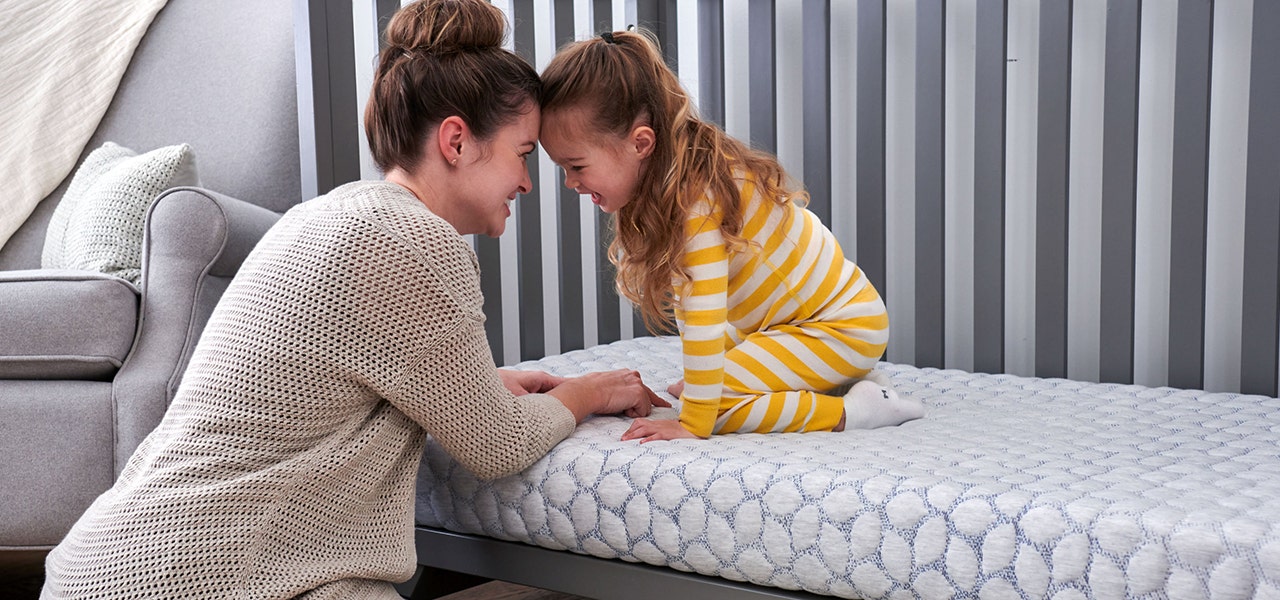

Crib Mattress Allergens: Some materials in crib mattresses can trigger allergic reactions in sensitive little ones. Common allergens include natural latex, wool, coir and sometimes soy-based foams or treatments. Lullaby Earth mattresses use allergy-friendly materials like food-grade polyethylene and polyester, avoiding these common triggers for safer sleep.
Firmness Test: A safety check ensuring the mattress is firm enough to reduce suffocation risks. It shouldn't compress more than 0.5 inches under the baby's weight. When you press your hand into a crib mattress, it should feel much firmer than your own bed.
Flame Retardants: Chemicals added to many mattresses to meet flammability standards, often linked to health concerns. Lullaby Earth achieves fire safety through innovative design and naturally safer materials instead of flame retardants. No scary chemicals needed to keep your little one protected!
Formaldehyde: A respiratory irritant sometimes found in adhesives and finishes used in conventional crib mattresses. Exposure can cause coughing, watery eyes and skin irritation in sensitive little ones.
Phthalates: Chemicals used to soften plastics in some waterproof mattress covers, associated with health concerns ranging from asthma to hormone disruption. Babies can be exposed through skin contact and breathing in these chemicals while sleeping.
Polyurethane Foam: A common material in conventional crib mattresses that can emit VOCs and may contain other concerning chemicals. While lightweight and affordable, this foam often comes with unwanted chemical baggage.
SIDS: Sudden Infant Death Syndrome (SIDS) is the unexplained death of a seemingly healthy baby during sleep. While the exact cause remains unknown, risk factors include soft sleep surfaces and loose bedding.
VOCs: Volatile Organic Compounds (VOCs) are gases emitted from certain materials that can affect indoor air quality and health. Many conventional mattresses release VOCs, especially when new. Lullaby Earth mattresses are designed to minimize VOC emissions and are GREENGUARD® Gold certified to prove it. (Wondering what that means? Keep reading ... )
Certifications and Standards
Certifications and safety standards can help you cut through the noise and choose a crib mattress that meets trusted, third-party standards for health, quality and peace of mind.
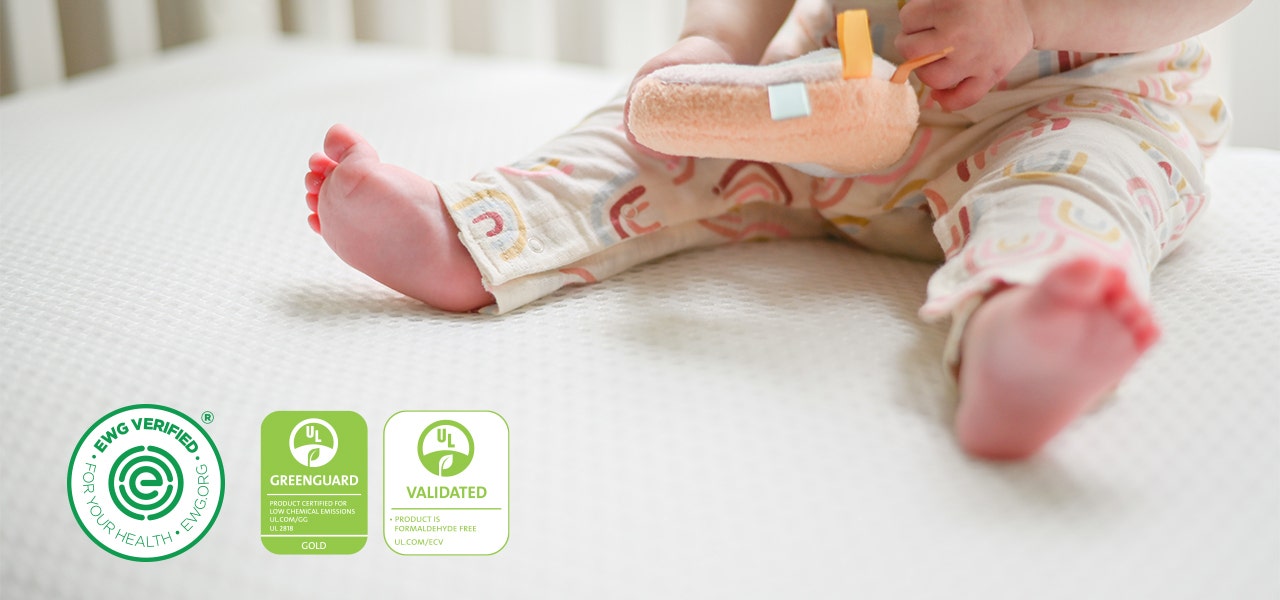

AAP Recommendations: Guidelines from the American Academy of Pediatrics for keeping your little one safe during sleep. They emphasize "Back to Sleep" positioning, firm mattresses and keeping the crib free of blankets, pillows and stuffed animals.
CPSC Guidelines: Safety standards from the U.S. Consumer Product Safety Commission that all crib mattresses must meet. These include specific size requirements, firmness testing and rules about how snugly a mattress must fit in the crib.
EWG Verified: A certification from the Environmental Working Group that identifies products made without potentially harmful chemicals. EWG Verified products avoid ingredients like phthalates, flame retardants, formaldehyde and excess VOCs. Lullaby Earth mattresses proudly carry this certification as part of our commitment to healthier sleep.
Juvenile Products Manufacturers Association (JPMA): A national trade organization representing companies that make baby and children's products. JPMA members like Lullaby Earth are committed to safety, innovation and transparency – and many participate in independent testing programs to help ensure their products meet rigorous safety standards.
UL/GREENGUARD: Certifications focused on indoor air quality and chemical emissions. GREENGUARD Gold certification means products have been tested for over 10,000 chemicals and meet some of the world's strictest standards for VOC emissions. UL Formaldehyde Free Validation means a product is free of formaldehyde. Lullaby Earth mattresses are GREENGUARD Gold certified and UL Formaldehyde Free validated to help your little one breathe easier during sleep.
Parenting Is Hard. Crib Mattress Shopping Doesn't Have to Be.
Shopping for your little one's first sleep space seems like it shouldn't require a dictionary ... but aren't you glad we made one anyways? Now that you're familiar with these important terms, you can shop with confidence.
Sweet dreams are made of this: parents who care, products that protect and, most importantly, a dreamer. If you're here, that's step one. If you've read this far, you're ready for step two. And step three? That one's on you.
Related Articles:
When to Flip a Two-Sided Crib Mattress
Which Crib Mattress Should I Get?

 Baby
Baby
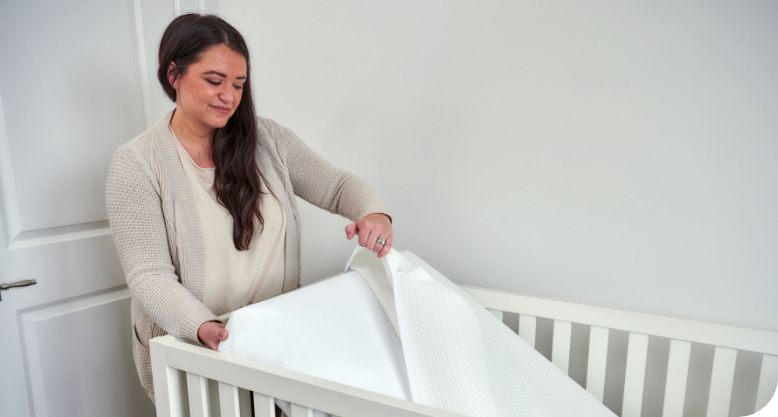
 Kids
Kids
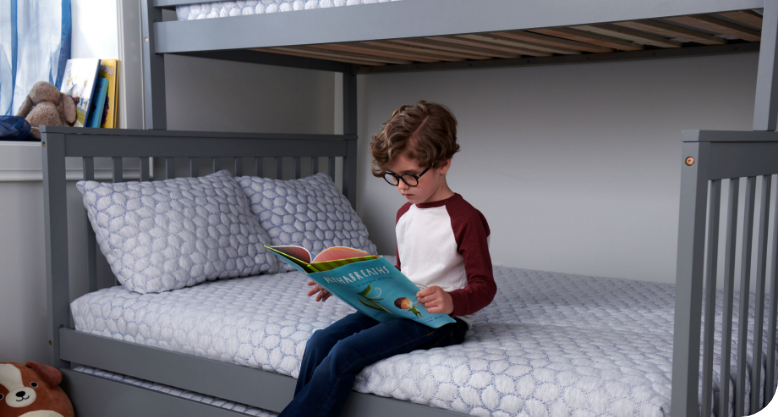
 Learn
Learn
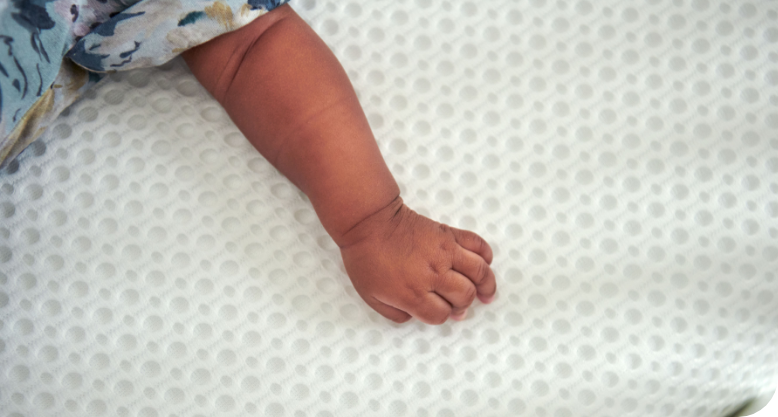
 FIND A STORE
FIND A STORE CONTACT
CONTACT